Like the Yu Garden, Shanghai’s Jade Buddha Temple is an island of tranquility in an urban sea.
Here, though, it is the worshipers – rather than nature – which infuse it with a palpable spirituality.
The Temple sits on an otherwise obscure side street on the city’s north side in a neighborhood made up mostly of homes and shops of two or three stories. The new high-rise pushing skyward on the adjoining block feels out-of-place.
The temple’s street-facing wall is tastefully and classically Chinese in style, but unassuming. Visitors wander unhurriedly in and out of its gate, which connects along a short promenade to a courtyard.
The feeling here is uncrowded despite the number of people present. There is no pushing or jostling, and conversation among onlookers is brief and whispered.
The air is heavy with the haze and fragrance of incense mixed with the sound of chants.
Overhead, strings of red Chinese lanterns converge upon the open face of a building which runs the length of the courtyard.
Coin offerings which sustain the temple are scattered around fountains or tucked into the mouths of sculptures, awaiting collection.
Bright banners hung all along its face nearly obscure the outsized golden images standing on an altar within.
A stage-like dais extends from the temple into the courtyard. There, a row of bald-shaven, saffron-robed monks face the golden statues and chant in prayer alongside black-robed novitiates.
When their service is completed, the monks are replaced by ordinary Chinese and the prayers begin again, many this time privately.
Behind the screen of banners, elders with saffron robes cloaked in red sit at the foot of the golden statues in trance-like prayer.
They seem oblivious to both worshipers outside and tourists filing deeper into the Temple around them. The Buddhas here are not the tranquil, meditative variety that I’ve seen outside of China, but elaborately costumed images which take many forms.
The difference is the result of Buddhism merging with Daoism and folk religions after it arrived in China along trade routes from India and Central Asia around 200 BCE.
Unlike the Indian and Tibetan traditions which revere and portray Buddha solely as a teacher, Chinese Buddhists came to adore him also as a god to whom they prayed for help and salvation. Even today, many Chinese Buddhists also pray to Taoist gods and to their own ancestors.
While early Chinese images of Buddha shared the same gaunt frame, gestures and poses as seen in India and Tibet, the conversion of the teacher into a Chinese deity progressively worked a change in appearance.
Statues later found along the Silk Road depict the Indian teacher as a Greek god. Twenty-first century Chinese know Buddha in a myriad of forms ranging from a heavily armed, armor-clad warrior to the jolly fat man whose belly is rubbed for luck.
The Jade Buddha Temple’s namesake arrived from Burma by sea a century and a half ago, and is a reflection of the kinder, gentler Buddha of Indian tradition.
A large, marble Reclining Buddha dominates the inner recesses of the temple, but it’s not to be mistaken for the smaller, jade original, which can be viewed on the second floor for a small admission fee. Photos of it are prohibited.
Over the course of China’s long history, Buddhists were alternately embraced and purged by its rulers. The Emperor ordered the elimination of Buddhism early in the first millennium, but it survived in some of the separate kingdoms which succeeded it.
The court of China’s last emperor embraced a blend of Tibetan Buddhism and Confucianism. When the 1960’s Cultural Revolution targeted all religion for eradication in the 1960’s Red Guards attacked and even destroyed some of China’s most ancient Buddhist temples. Regular worship was not resumed until 1985.
I was told that political groups are currently banned from activity within churches, and that churches are prohibited from preaching beyond their walls. It’s a decidedly different take on separation of Church and State.
As witnessed by the number of young adults worshiping today, Buddhism’s popularity in China has rebounded over the past two decades. Around 6% of today’s Chinese – slightly more than the number of Catholics in the U.S. – identify themselves as Buddhists, and many more practice religions significantly influenced by it.
I emerge from the Temple cocoon and back into the world of sidewalk hawkers groaning buses, and. kamikaze motorbike drivers.
I reflect on how the influence of Chinese culture changed the face of Buddhism, and I can’t help but wonder how Chinese culture may yet reinvent capitalism.


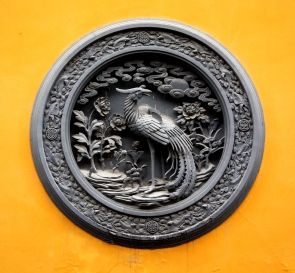
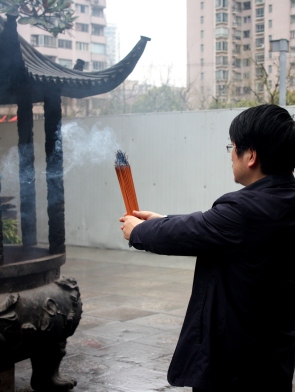
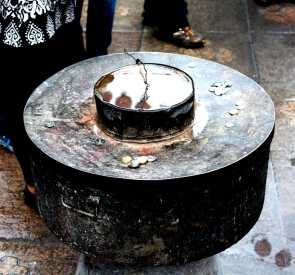
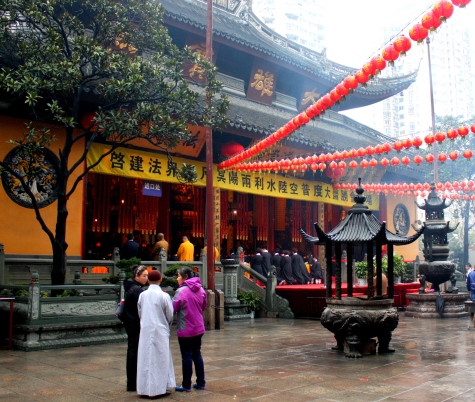



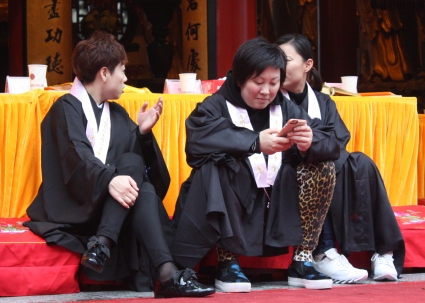

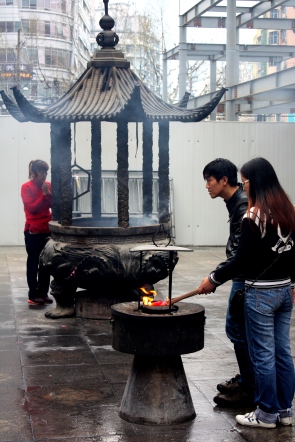


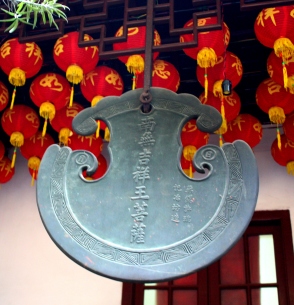
Oh, wonderful, Antonio!
It was a very moving experience!
Thanks for sending. Very interesting and beautiful.
Sent from my iPad